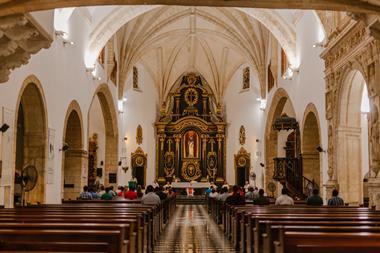Mergers and acquisitions always involve changes affecting both the operational and the human side of any business. The history of Aventis is no exception.
Created in 1999, after the merger between Rhône Poulenc and Hoechst, the convergence process that the company has undergone during the past two years has altered the shape of many areas of the group.
For those companies involved, the merger meant a restructuring of business operations and workforce that, logically, had a clear impact on human resources and pension management.
This has indeed been the case for Aventis France. Starting in 2000, the company decided a restructuring of its existing defined contribution/French savings plan system was urgently needed.
At that moment, the group had 13 different funds covering the different layers of employees who, prior to the merger, worked for HMR, Rhône Poulenc and AgrEvo.
The restructuring process started with the decision to reduce the number of funds on offer and create a new investment management strategy. Even though the use of consultants is not common among French retirement plans, Aventis hired the expertise of an external provider to help it conduct the whole process.
The aim of the revision was to set up a more global and better diversified approach to investment that could better respond to current market conditions, and that could also be accessed by all employees within the group.
The new investment strategy should include a higher exposure to global and European equities and European bonds, and look at aspects such as value and growth investment styles, passive and active asset management and the diversification of the fixed income portfolio.
With the help of the consultant, an in-depth analysis of the existing managers was undertaken. Taking into account management capabilities and performance, it was decided not to keep any of the existing managers and organise a beauty contest to select new providers.
Also, a new fund structure was agreed. The new scheme would be structured around five new funds to cover all employees, replacing the existing 13. The portfolio split of the new funds was defined. Two would be balanced funds, one of them investing 60% of its assets in fixed income and 40% global equity, and the other with a 60% exposure to global equity and 40% fixed income. The remaining three funds would invest in global equity, European equity and cash-oriented investment respectively.
With this new structure in mind, Aventis invited asset managers to fill in a request for proposals questionnaire and give presentations about their management abilities.
The unions and a corporate representative of the supervisory boards of the existing funds assessed a total of 15 different investment managers and administrators. This committee decided to select the new asset managers on a pure balanced basis, so that in the balanced funds there would be a fixed income specialist and an equity specialist integrated.
At the end of the process, the final manager line-up included local and foreign managers. In total Aventis chose one French manager, Indocam, two US names, Lazard and Capital International, one US-French joint venture, Fisher Frances Trees and Watt, and one passive UK house, Barclays Global Investors. The cash-oriented fund will be managed by the fund’s administrator Interepargne.
Once this new structure started operating, Aventis has began thinking about the challenges ahead. As the assets under management, representing e300m, are now quite significant, the scheme is thinking of using investment vehicles that could better meet its investment needs.
In the past the savings plans operated under a ‘fund of fund’ principle by investing in mutual funds. The fact that the scheme has grown in size could allow them to set up direct mandates between the administrator and the asset managers. By doing so it would be possible for Aventis to operate under an institutional fee framework, eliminating the double cost structure on the administration and custody side. The scheme is now trying to find out whether the establishment of such a structure is actually possible in France and this will be one of focus in the near future.
Although there is still a lot to be done, the restructuring of Aventis’ approach to retirement plans, has been a significant one. The company has managed to create a more diversified and global portfolio that meets the needs of its newly established retirement funds, and this in itself represents a huge step ahead.




























No comments yet